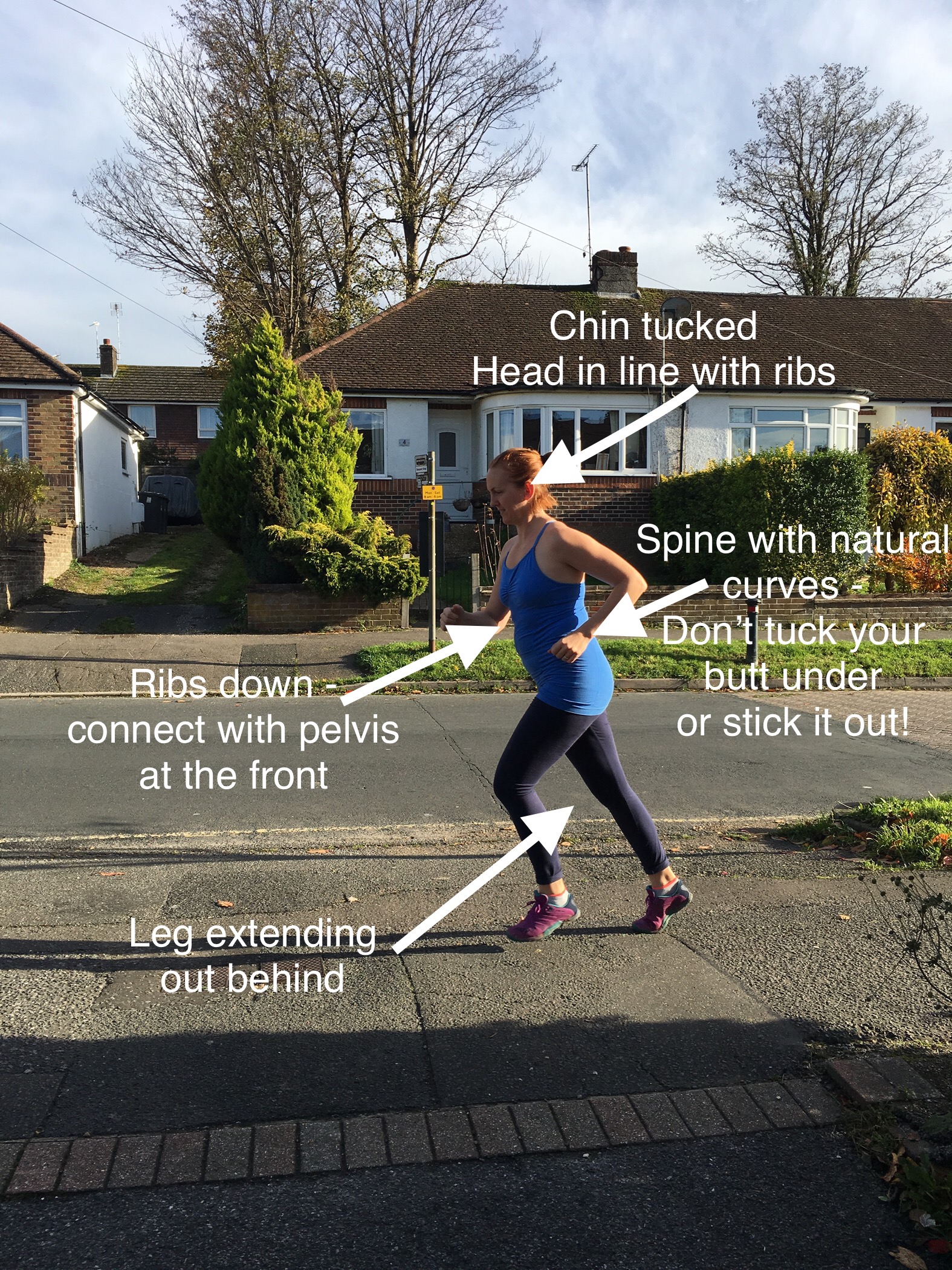I hear from many women (myself included at one point), that they are worried about running because they don’t trust their pelvic floor, or they can’t run very much before it all going a bit pear shaped. I get that, I wasn’t sure my pelvic floor would hold either, but now I know that you can start running whenever you like or whenever you need to without worry because if you set yourself up well you’ll be using your body efficiently so your pelvic floor will be in the right place.
“But surely my pelvic floor is always in the same place, how can it be in the right or wrong place?” - ah well that’s the thing, the way we stand, walk, go up and down stairs, get out of a chair and run can all influence whether our pelvic floor is in a position where it can do it’s job well or in a position that there’s not a hope in hell it could hold on and so most likely it won’t! So let’s set you up right and then off you go!
Ideally I would have you take a photo of yourself side on so you can see the curves of your spine - if not a photo, at least stand side on to a mirror and take a look.
Our spine has natural curves from the joint between our skull and neck curving slightly forward, the area around the back of our ribs curving slightly back and then a low curve behind our pelvis which curves forward again. In some people these gentle curves can become exaggerated and a head forward posture leads to an increased upper back curve and increased lower back curve to balance all the way through. In others the spine can be very flat through the upper half and with a steeper curve in the low back to compensate. In others, and this is more common in post-natal women, the curve in the low back travels up to behind the belly button and either their butt sticks out or, more commonly they tuck their bottom under to compensate for the excessive curve higher up.
So when you look at your spine, what do your curves look like?
When you’re standing, walking, running and all the rest of your daily movements you want to think about keeping your ribs connected to the pelvis at the front. In 99% of my clients we focus on ribs down - this is through expanding your back as well as connecting through your front. So when you walk and go to start running keep your ribs dropped down so you have that connection and control set up right.
Then check in with where your pelvis is, if it’s stuck out you’re going to have problems with the impact of running on your low back, and if it’s tucked under - surprisingly common! - you’ll have problems with your pelvic floor struggling to hold strong enough with the weight of your trunk going down through your pelvis. Start from the ribs and then you may find the pelvis stacks correctly underneath.
What about your head? Remember your head is pretty heavy, if you run with your head stuck out forwards that’s going to increase the slump down through your upper back and make it heavy to keep picking up each step - like holding a bowling ball in your arm all the time! So keep your chin tucked slightly and back of your neck long so your head and ribs are all in a line.
As you start to run, make sure you drive your legs back out behind you each step instead of scooting your feet forwards. It helps if you start from where your foot lands - make it mid or fore foot instead of heel which means you are best to strike the floor almost under your body rather than out in front.
Last thing - arms - do they swing across your body or do you use your arms forwards and back like pistons to help propel you. If you are doing the cross body swinging thing you are potentially lacking mobility in your upper back to get enough counter rotation to your pelvis - ie. your pelvis and ribcage should rotate opposite to each other each step - but if you don’t get enough of this then your arms have to swing to get more momentum.
Having someone take a video of you running is a brilliant tool to help you learn. You often find that what you think you’re doing and what you’re actually doing are a world apart from each other and seeing yourself can help you close that gap.
Don’t be afraid to run, here’s my top 3 tips for starting out:
Go by feel not distance, speed or what your technology says
Walk then run, walk, run, walk, run - slow to a walk when you feel your alignment (all those points above) is failing to hold. There’s only any point in running while you’re doing good technique rather than ending up in a sloshy mess at the end.
Breath into your ribs to the side and back under your shoulders - more of that in the next post - not by tightening your neck and dragging your shoulders up
Have fun, running is a brilliant way to get some headspace, take an easy amount of time out to do something for yourself and most importantly enjoy spending time in nature whatever the weather. I will post more soon about conditioning exercises for running so you can make sure you’re strong enough all over to keep going.
Happy Running!

